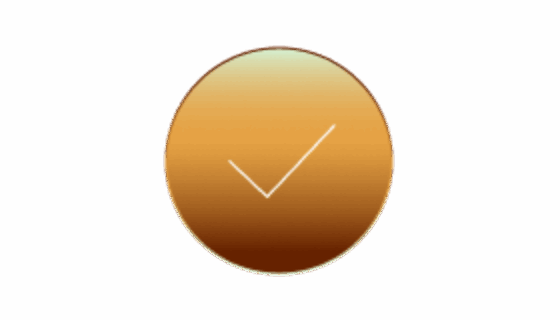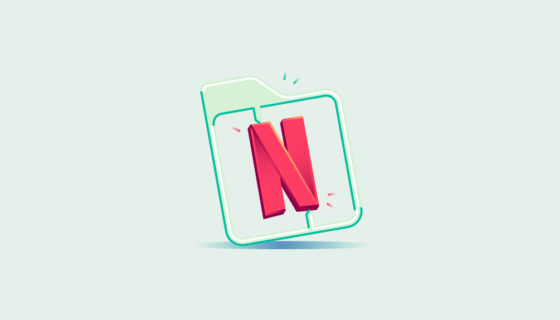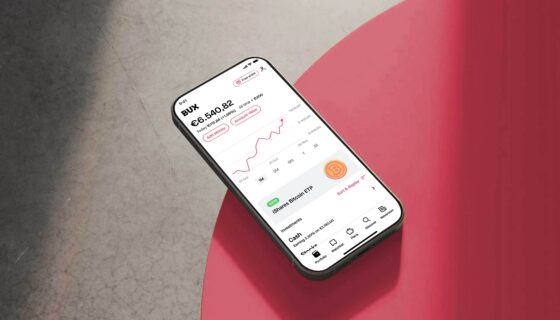Investing in ETFs: What Is It and How Do You Do It?
KnowledgeInvesting in ETFs
ETFs make smart, diversified, and affordable investing accessible. But what exactly is an ETF? And how can you invest in them? In this article, you’ll discover everything about ETFs and how you can start investing with BUX today.
ETF Meaning
An exchange-traded fund (ETF), also known as an index fund, is a fund that is traded on a stock exchange. Instead of investing in a single company, with an ETF, you invest in dozens or even hundreds of companies at once. This creates a diversified portfolio, resulting in lower transaction costs. It’s a cost-effective and user-friendly way to invest. However, investing does carry risks.
What Is an Exchange Traded Fund (ETFs)?
An exchange-traded fund (ETF), also known as an index fund, is a type of fund that is traded on the stock market, similar to stocks. Instead of investing in one company, an ETF allows you to invest in dozens or hundreds of companies simultaneously. Think of it as a shopping basket full of investment products (like stocks, bonds, or commodities). You’re not just choosing apples or bananas, but a variety of fruits. Due to large-scale purchasing, transaction costs remain low, and you get a diversified portfolio.
Not a BUX investor yet? Create your account
How Do ETFs Work?
Many exchange-traded funds track an index, such as the AEX (Amsterdam Exchange Index) or LSE (London Stock Exchange). This means the value of the ETF tracks the performance of the index. If the index goes up, so does your ETF. If it falls, the value of your ETF will also drop. This tracking is also known as ‘tracking.’
You buy and sell exchange-traded funds just like stocks, via an investment platform or broker like BUX. The price fluctuates throughout the day in response to market conditions. Because ETFs are often passively managed—simply following an existing index—costs are usually low, and it’s an easy way to diversify your investments.
Choosing an ETF: Different Types of ETFs
ETFs come in many varieties, so there’s always one that fits your style and goals. They differ in terms of investment strategy, product type, geographic focus, and more. Here are some types of ETFs:
- Index ETFs: Track a specific index, such as the S&P 500, AEX, or MSCI World. These consist solely of stocks.
- Bond ETFs: Track bond indices or focus on specific government or corporate bonds.
- Commodity ETFs: Track the performance of commodities, like gold ETFs.
- Sector ETFs: Follow a specific sector like healthcare, tech, or energy.
- Geographic ETFs: Focused on a specific region or country, like European or U.S. companies.
- Thematic ETFs: Centred around specific themes, such as sustainability or social impact.
- Leveraged and inverse ETFs: Leveraged ETFs aim to amplify the daily return of an index, often by two or three times. Inverse ETFs are designed to achieve the opposite return of an index or sector.
The Pros and Cons of Investing in ETFs
Exchange-traded funds are a smart way to start investing, but there are also drawbacks to consider. Let’s have a closer look.
Advantages of ETFs
Disadvantages of ETFs
Accessible to investors
You can start with as little as €10.
Index tracking errors
ETFs aim to mirror an index closely, but technical factors can lead to tracking errors.
Smart diversification
ETFs come in all shapes and sizes, offering broad exposure that would otherwise be costly.
Risk of closure
If an ETF shuts down, you might face tax consequences and have to reinvest your money elsewhere.
Cost-effective
Passive ETFs are especially affordable due to their low management fees and the economies of scale they offer.
Counterparty risk
Synthetic ETFs rely on a third party for replication. If that party faces trouble, your investment might be affected.
Ease of use
ETFs are as easy to buy and sell as individual stocks.
Potential illiquidity
Some ETFs invest in hard-to-trade assets, such as certain corporate bonds, making it difficult to sell quickly at a good price under market stress.
Transparency
ETFs must show their holdings daily; their prices are continuously updated and publicly visible.
The Difference Between an ETF and Stocks
When you buy a stock, you invest in a single company. If that company does well, so do you—but the risk is also higher: if things go wrong, you could lose value quickly.
With an exchange-traded fund, you buy a slice of many companies at once. You don’t need to choose between companies, which results in diversification and more stability. Volatility in a single stock has a smaller impact on your total investment. That’s why ETFs are often compared to mutual funds.
Read More: ETFs vs. Stocks—What’s Right for You?
The Difference Between an ETF and a Mutual Investment Fund
ETFs and mutual funds are similar but function differently. Both involve a basket of investment products. The key difference lies in management style.
- Most ETFs, unlike mutual funds, are passively managed—they track an index. This keeps costs low, and you can trade them throughout the day on the stock exchange. This makes them easier to use. Since they’re not actively managed, corporate events or index changes can present risks.
- Mutual funds are often actively managed, although passive options exist. A fund manager tries to outperform the market, which requires more time and incurs higher costs. You typically can only buy or sell once per day.
Investing in ETFs: Tips for Beginners
Starting with investing can feel like a big step, but exchange-traded funds make it manageable. Here are a few tips:
- Start small: Even a few euros a month can kick-start your wealth building.
- Select the right ETF for you: Choose an index ETF or a thematic one focused on sustainability.
- Understand your ETF: Check what the fund invests in—regions, sectors, specific companies.
- Review the cost ratio: The Total Expense Ratio (TER) shows your annual cost. The lower the TER, the more return you keep.
- Check the risk indicator: Every ETF has a risk score (1–7). The higher the score, the more volatility.
- Be aware of the consequences: Investing carries risks. You could lose part or all of your investment. Be sure to set aside a financial buffer.
ETF Investment: How to Buy Them
You can buy ETFs via a broker like BUX. We offer a wide range of exchange-traded funds from providers like iShares by BlackRock, SPDRs by State Street Global Advisors, and VanEck.
Prefer a hands-off approach? Choose the BUX Investment Plan. Through our user-friendly BUX app, easily set up a monthly investment amount starting at €10. Pick the ETFs that suit you, and we’ll automatically invest your money. Just pick a day of the month and set your goal, then start working on your returns.
Not a BUX investor yet?
Create your account in a few minutes and start building your wealth.
Investing involves risks. You can lose your investment.
All views, opinions, and analyses in this article should not be read as personal investment advice and individual investors should make their own decisions or seek independent advice. This article has not been prepared in accordance with legal requirements designed to promote the independence of investment research and is considered a marketing communication.
 New: Invest in
New: Invest in 

